A number of young people in the coastal areas of Central Java don’t want to remain silent as their environment is damaged by climate change.
By: FARIS FIRDAUS
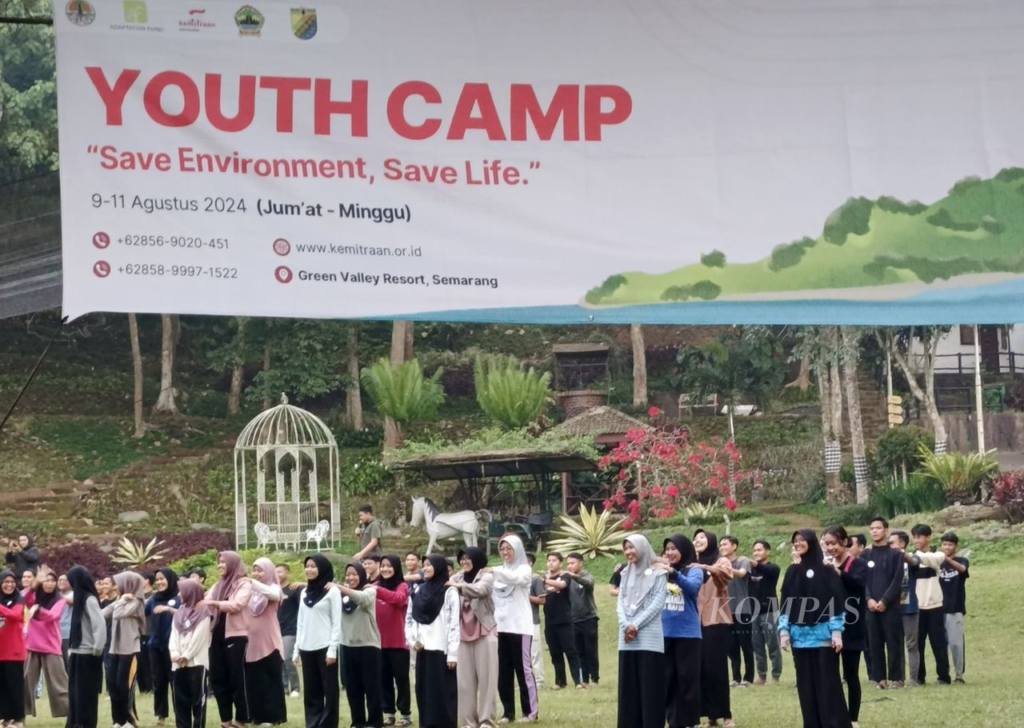
Young people in the north coast of Central Java are dealing directly with the impacts of climate change. Despite their anxiety, they do not want to give up hope. Some of these young people are trying to play a role in dealing with the impacts of climate change.
For some time now, the neighborhood where Dwi Ardiansah (19) lives in Bener Village, Wiradesa Subdistrict, Pekalongan Regency, Central Java, has been increasingly flooded. In fact, a few years ago, flooding was rare in the area.
“My place used to be less prone to flooding. But, now it’s suddenly like a little rain floods, a little rain floods. The change is really visible,” he said when met in Semarang Regency, Central Java, Friday (9/8/2024).
In addition to regular flooding, some areas near Dwi’s house have also been hit by tidal flooding. In fact, the area affected by tidal flooding in the area is expanding. “The northernmost area has been affected by tidal floods for a long time, but now there is also tidal flooding further south,” he said.
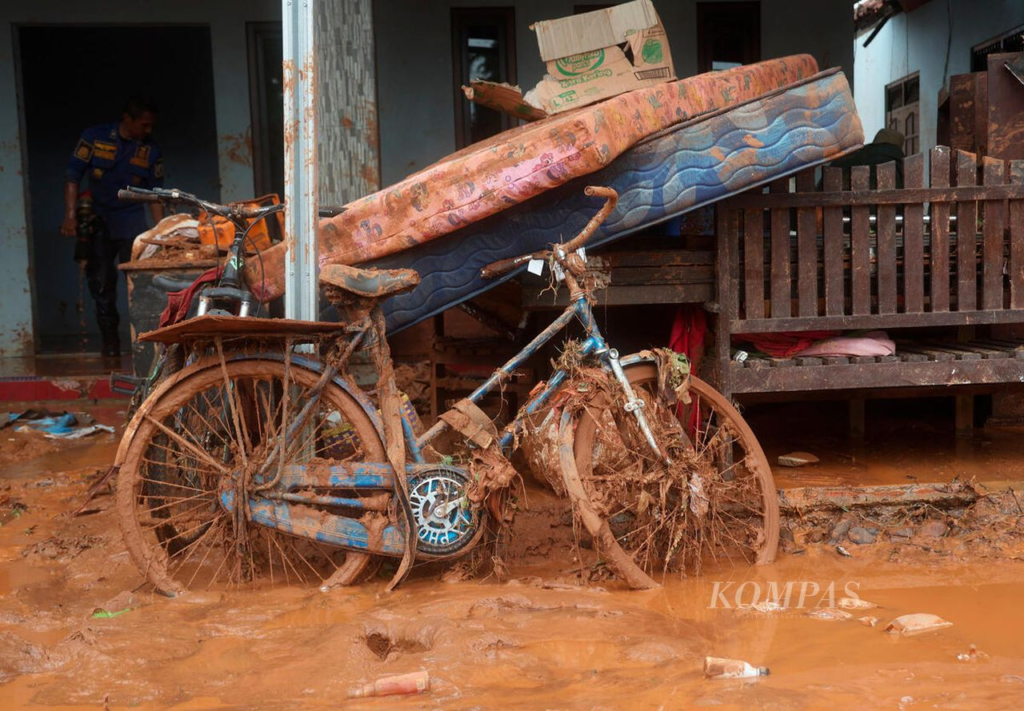
Property belonging to residents who were recovered after being washed away by flash floods in Wangandowo Village, Bojong Subdistrict, Pekalongan Regency, Central Java, Thursday (3/14/2024).
At first, Dwi didn’t think much about the cause of the increasingly frequent flooding and widespread tidal flooding. However, he later realized that the phenomenon is part of the impact of climate change.
“We used to think that these phenomena (flooding and tidal flooding) were normal, so we just gave up. Only later did I understand that this is the impact of climate change,” said the student majoring in Business Administration at Diponegoro University, Semarang.
Dwi’s knowledge about climate change increased after attending a youth camp themed “Save Environment, Save Life” held in Semarang Regency on August 9-11, 2024.
The event, organized by KEMITRAAN organization, was attended by around 100 young people from six regions on the north coast of Central Java, namely Pekalongan Regency, Pekalongan City, Tegal City, Batang Regency, Semarang City, and Demak Regency.
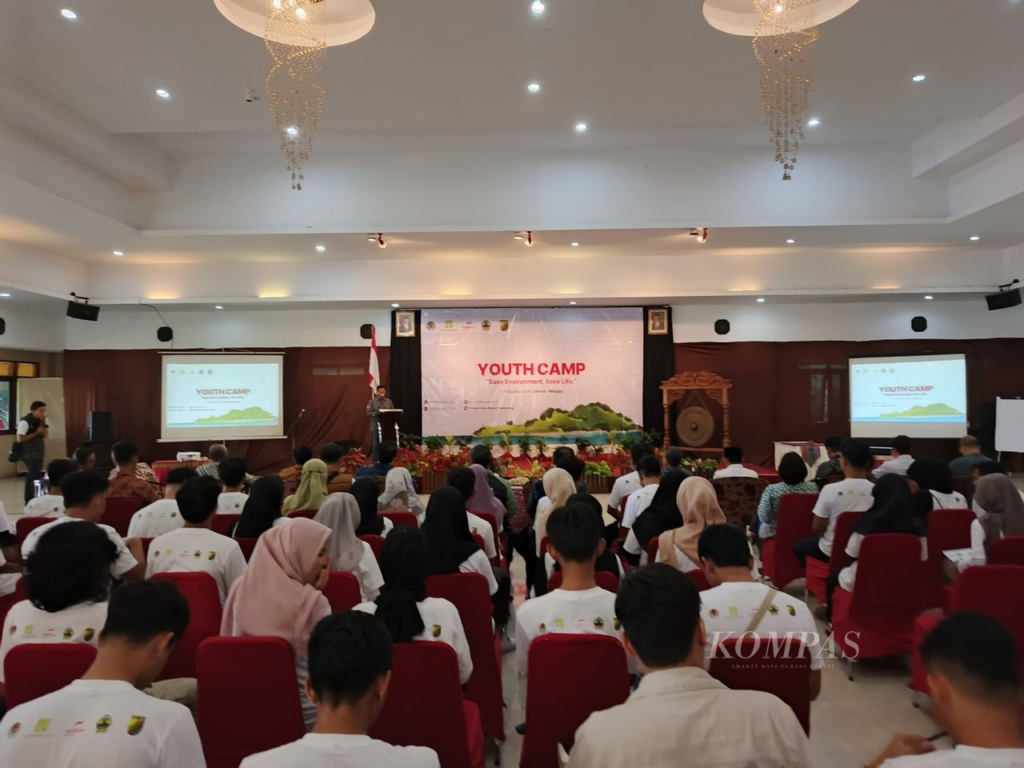
A number of young people attended the opening of a youth camp themed “Save Environment, Save Life” on Friday (9/8/2024) at Semarang Regency, Central Java.
The youth camp is part of the climate change adaptation program run by Kemitraan in a number of areas in Central Java with funding support from the Adaptation Fund.
In the event, the participants received various materials related to climate change and it’s impacts, especially in the coastal areas of Central Java. They were also invited to discuss and formulate steps that can be taken to overcome the impacts of climate change.
After attending the youth camp, Dwi hopes to be able to contribute in dealing with the impacts of climate change. One of them is by producing digital content to disseminate information about climate change and it’s impacts.
“I hope this doesn’t end here. So, there is a continuation. If the younger generation is not aware of climate change, who else will be?” she said.
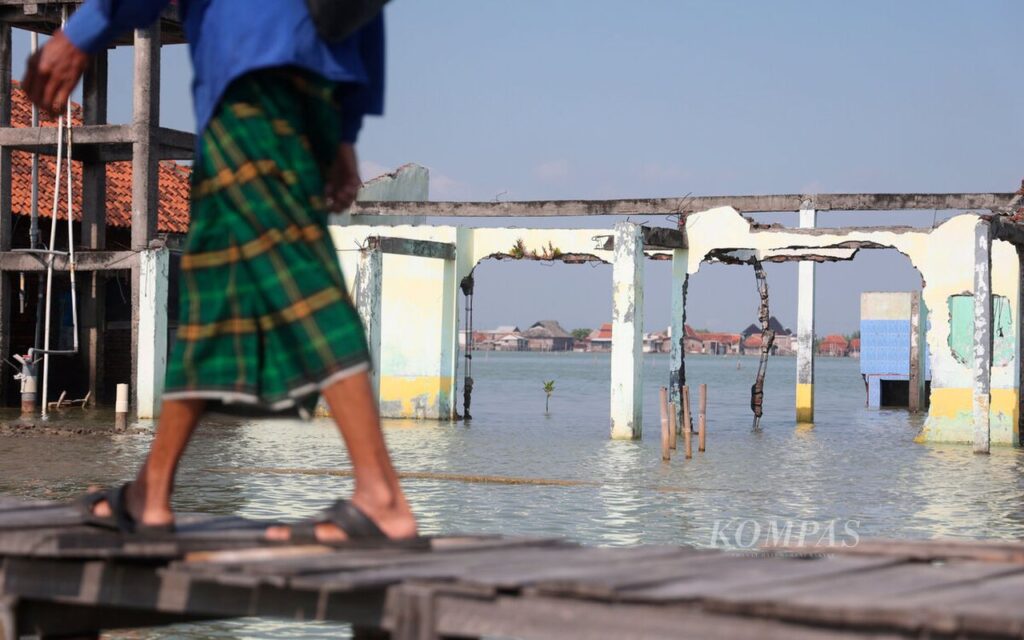
Another participant, Muhammad Badrud Duja (20), was also worried about the impact of climate change. The young man from Dombo Village, Sayung Subdistrict, Demak Regency, is familiar with the tidal flood phenomenon.
Duja said that so far, tidal floods have not inundated his village, which is located on the south side of the Demak coastal road. “The tidal floods have been in the northern part of the pantura route,” he said.
However, during his daily activities, Duja often has to pass through tidal inundation because the pantura route in Sayung is often hit by tidal floods. Moreover, so far, parts of Sayung have been submerged in tidal floods that never recede.
In fact, based on the measurements of the Geography Department team of the University of Indonesia published in the book Changes in the Coastline of the North Coast of Java (2020), in the period 1995-2015, abrasion made 1,645.2 hectares of land in Sayung or about 20 percent of the sub-district area turned into water.
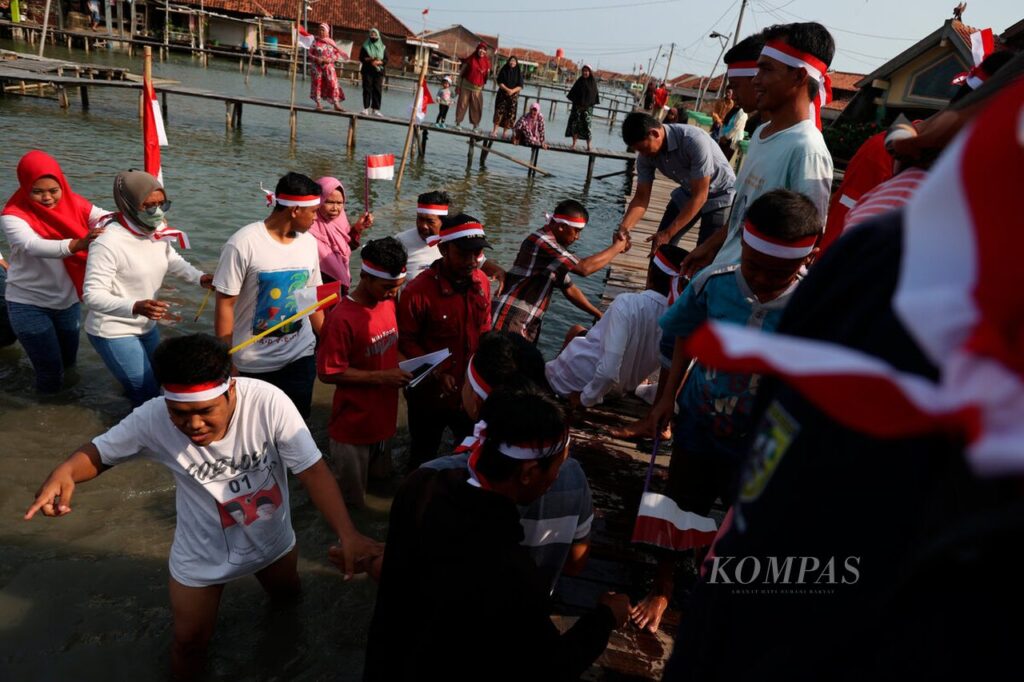
The tidal inundation that occurs also has an impact on Duja’s life. “The tidal flooding has caused my motorcycle to break down quickly,” said the young man who graduated from madrasah aliyah (high school).
In fact, he is also worried if the tidal inundation continues to expand until it reaches his village. Duja is also worried about the condition of his neighborhood in the future. “What coastal youth are afraid of is that when we get married and have children, what will be the condition?” he said.
Duja added that he was interested in joining the youth camp organized by KEMITRAAN because his knowledge about climate change was still very minimal. In fact, the area around where he lives also feels the impact of the phenomenon.
“After attending this event, I hope I can help educate my friends who live on the coast,” he said.

Across generations
Director of KEMITRAAN’s Sustainable Governance Program Eka Melisa said that climate change is a problem that not only occurs now, but will also be experienced in the future. Therefore, climate change mitigation and adaptation efforts must involve cross-generations.
That is why KEMITRAAN has held several youth camps to increase the knowledge of young people related to climate change. KEMITRAAN also always involves young people in efforts to mitigate the impacts of climate change.
What coastal youth fear is that if we get married and have children, what will be the condition?
In this engagement, Eka said, KEMITRAAN makes young people as subjects, not objects. “We at KEMITRAAN always consider young people as partners, the same as the government and other parties,” she said.
Eka said, when running the climate change adaptation program in Pekalongan City, KEMITRAAN also involved local young people as urban village facilitators. “The village facilitators are mostly young people and local people so that they can also make their friends aware (of climate change),” she said.
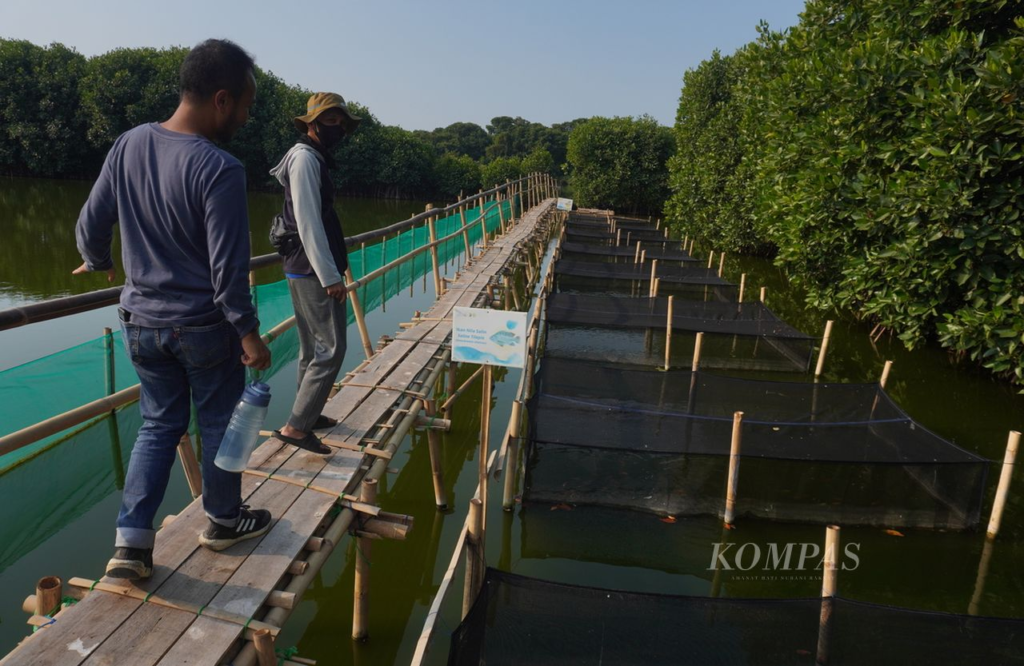
KEMITRAAN with Pekalongan youths also formed Kolaborasi Bareng Pemuda (Kobar) Pekalongan. The community of young people is active in various activities related to climate change, such as film screenings, discussions, and mangrove planting.
Based on information on the Kobar Pekalongan Instagram account, until July 2024, the community had planted 23,500 mangrove seedlings on an area of 14,714 square meters. The planting was carried out in three urban villages in Pekalongan City, namely Bandengan, Degayu, and Kandang Panjang.
Eka said that young people in Kobar Pekalongan were also involved in the development of the Community-Based Climate Resilience (Kibas) website initiated by KEMITRAAN and the Pekalongan City Government. The website, kibas-pekalongan.id, contains information on the efforts of various parties in Pekalongan City to adapt and mitigate climate change.
Encouraging innovation
Head of the Watershed Management and Natural Resources Conservation Division of the Central Java Environment and Forestry Agency Soegiharto said that to deal with climate change, there are two main efforts that can be made, namely adaptation and mitigation.
Adaptation aims to increase community resilience in order to adapt to conditions caused by climate change. Mitigation is a preventive measure through reducing greenhouse gas emissions.
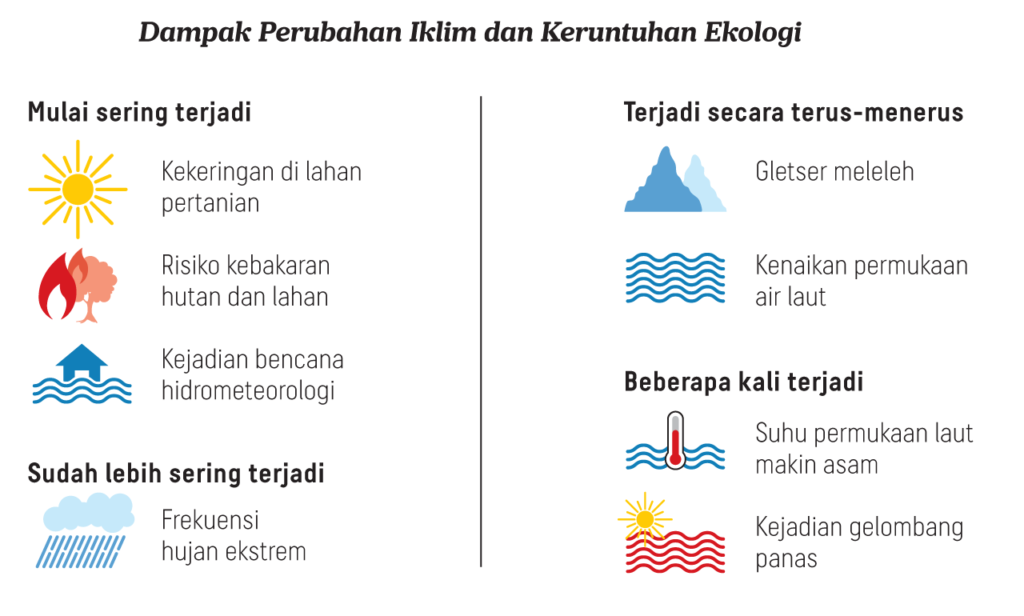
To support these efforts, Soegiharto said, the Central Java Provincial Government has developed various policies. One of them is the Central Java Governor Regulation No. 43/2012 on the Regional Action Plan for Reducing Greenhouse Gas Emissions in Central Java Province 2010-2020.
The Central Java Provincial Government has also developed the Central Java Climate Change Adaptation Action Plan 2023-2030. In addition, the Central Java Provincial Government runs a number of programs to deal with the impacts of climate change, such as the Climate Village program, Energy Independent Village, Sustainable Watershed Care Village, and the Environmental Care and Culture Movement in Schools.
Soegiharto added that climate change control in Central Java involves various parties, including the younger generation. “The participation of the young generation in climate change control is expected to encourage the growth of new thoughts and innovations to increase community resilience to the impacts of climate change,” he said when reading the remarks of the Regional Secretary of Central Java at the opening of the youth camp.
With their enthusiasm, creativity and knowledge, young people in the coastal areas of Central Java should not remain silent about climate change. They are expected to participate in strengthening mitigation and adaptation efforts so that the impacts of climate change can be better controlled.
Editor: NELI TRIANA






